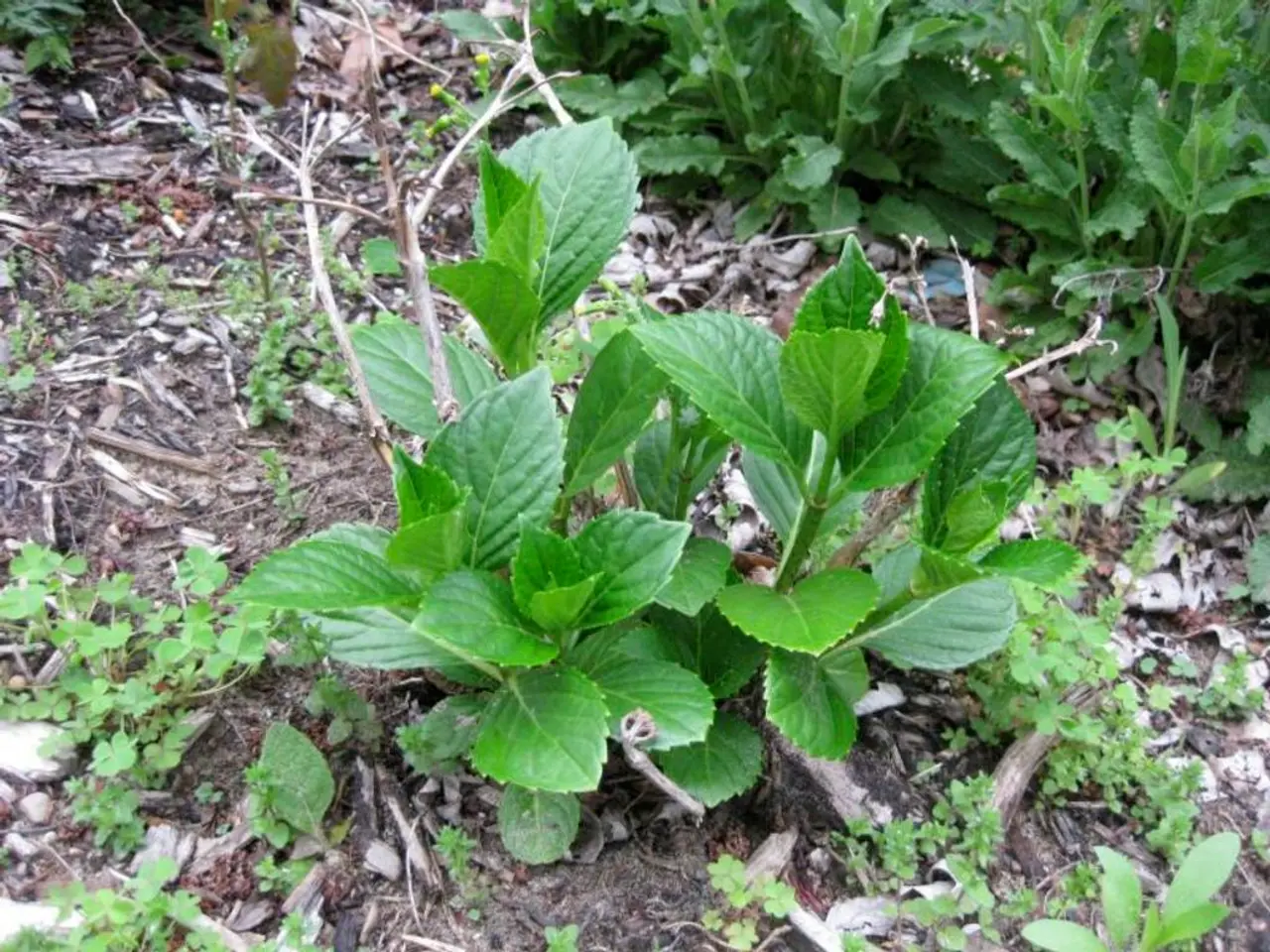Tips for Natural Herb Cultivation: Avoiding Chemicals in Herb Gardening
In the heart of the Middle Ages, a gardening technique known as crop rotation was born, and it remains a valuable practice today. By moving plants to different areas of the garden each year, gardeners can maintain soil health, prevent depletion of nutrients, and ward off the buildup of pathogens causing plant diseases.
When it comes to nurturing herbs, a delicate balance is essential. Over-fertilizing herbs can lead to excessive leaf growth and a weaker flavor or aroma. Instead, organic fertilization with small amounts every two weeks is recommended.
However, the key to growing herbs organically, without pesticides or herbicides, goes beyond just fertilization. Building healthy soil, encouraging biodiversity, and employing natural pest and weed management strategies are all crucial components of a thriving chemical-free herb garden.
Start with nutrient-rich soil
The foundation of a healthy herb garden is rich, nutrient-dense soil. Use plant-based compost, cover crops, and mineral amendments to enrich your soil naturally. Healthy soil supports strong, resilient herbs that are less susceptible to pests and diseases.
Select herbs suited for your climate and season
Choosing the right herbs is crucial for an easy-to-maintain and disease-resistant herb garden. Plant hardy varieties like sage, oregano, thyme (perennials), or direct sow others such as cilantro and dill in appropriate seasons. Starting herbs indoors and transplanting can give a head start.
Encourage beneficial insects and pollinators
Plant a diverse mix of native flowers and companion plants to attract insects that naturally control pests. Companion planting involves growing different varieties of plants closely to enhance each of the plants' growth and could reinforce the healthiness of the crops without the use of chemicals.
Practice crop rotation and diversity
Rotate different herbs and plant species yearly to maintain soil fertility and reduce pest buildup. This practice, dating back to the Middle Ages, helps ensure a thriving herb garden.
Manage weeds organically
Instead of chemical herbicides, try mulching, hand weeding, or tested natural weed control methods. Some vinegar-based DIY weed killers can be effective, though results vary and care is needed not to harm herbs.
Harvest regularly
Frequent harvesting encourages more growth and keeps plants healthy. Harvest your favorite herbs as soon as possible.
Avoid synthetic fertilizers
Use vegan or plant-based organic fertilizers and homemade compost from kitchen and garden waste. Organic fertilizers, made from biodegradable compounds such as manure, rotting matter, kitchen wastes, garden wastes, etc., enrich the soil with important nutrients for plant growth.
Consider regenerative practices
Incorporate herbs that improve soil health and reduce dependence on external inputs, enhancing long-term garden sustainability.
By following these principles, you can create a flourishing herb garden rich in flavor and eco-friendly benefits, ensuring your herbs grow strong without harmful chemicals. A chemical-free herb garden not only provides delicious herbs for your meals but also contributes to a healthier environment by avoiding the use of toxic chemicals.
Incorporate nutrient-rich soil into your gardening practices, using organic methods such as plant-based compost, cover crops, and mineral amendments to maintain a healthy soil ecosystem.
When choosing which herbs to grow, select hardy varieties that are adapted to your climate and season for a low-maintenance and disease-resistant garden.
To create a thriving chemical-free herb garden, consider attracting beneficial insects and pollinators by planting native flowers and companion plants. This practice can aid in natural pest control and promote biodiversity.



